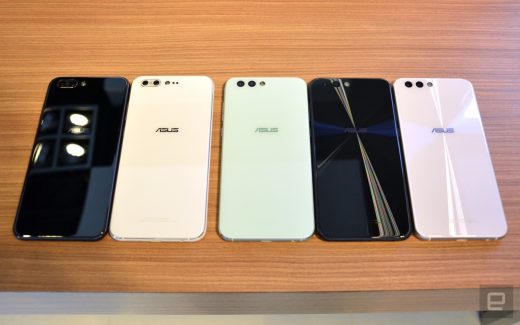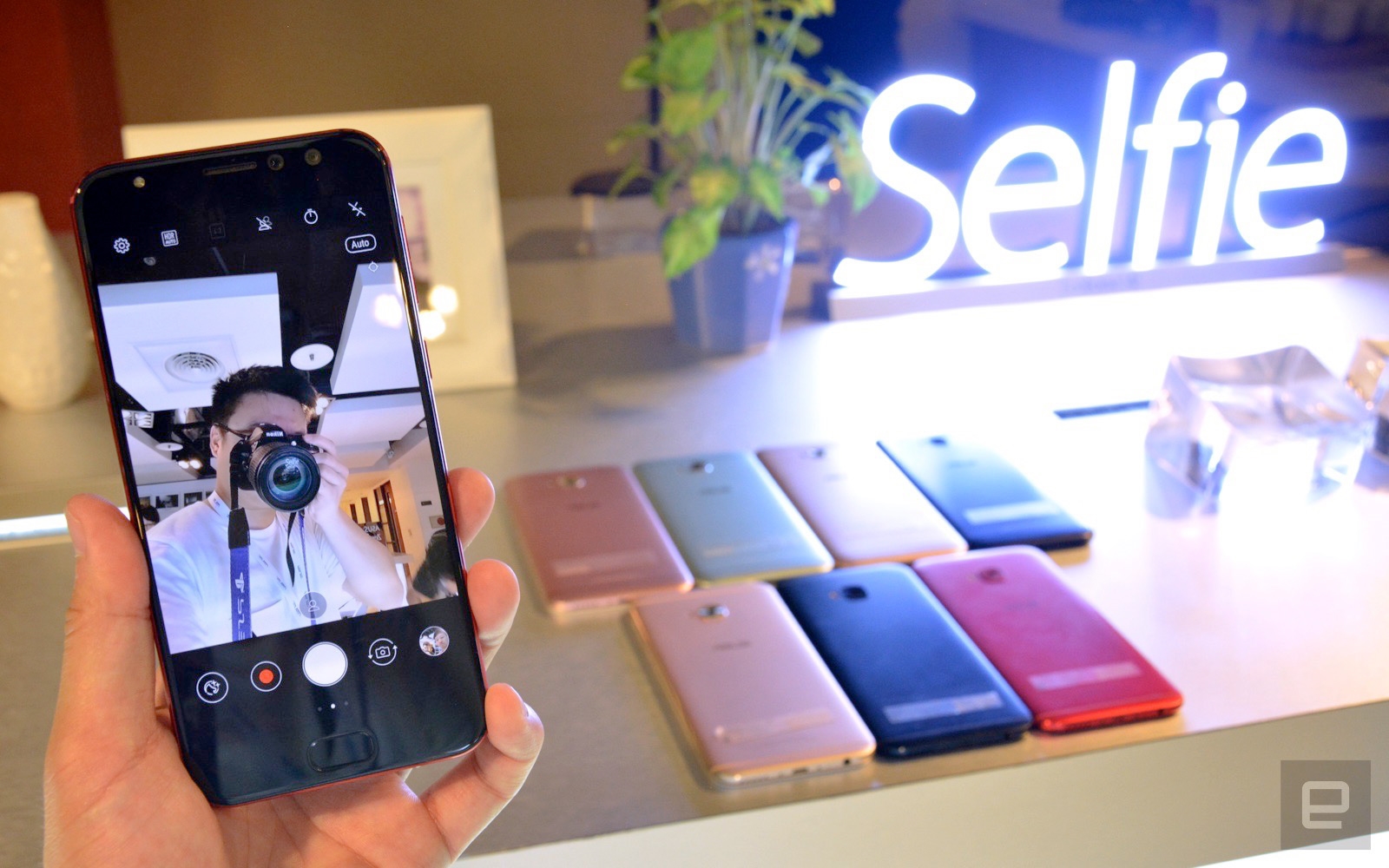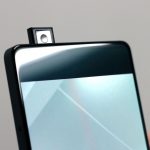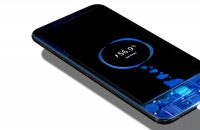ASUS goes dual-camera crazy for its ZenFone 4 series
ASUS’ smartphone division was unusually quiet back at Computex a couple of months ago, but now we know why. Today, the Taiwanese company unveiled its ZenFone 4 smartphone line with not one, but five Android Nougat devices in one go: ZenFone 4 Pro, ZenFone 4, ZenFone 4 Selfie Pro, ZenFone 4 Selfie and ZenFone 4 Max Pro (and these will all get updated to Android O). Going along with the event’s “We Love Photo” slogan, all five models share one thing in common: they all have a dual camera setup, though one model is using it for 2x optical zoom, while the rest use it for super wide-angle shots on either side.
The similar-looking ZenFone 4’s (ZE554KL) fancy concentric circle pattern on the back (except for the mint green version) may mislead you into thinking it’s the higher-end model, but its innards tell a very different story (ASUS has a tendency to apply this design to its mid-range models like the ZenFone 3). Its 5.5-inch 1080p display uses LCD instead of AMOLED, though it does have a higher 600-nit brightness. It also packs the mid-range octa-core Snapdragon 660 or Snapdragon 630 chipset instead, and it uses a slightly smaller 3,300 mAh battery, a single speaker plus dual-mic noise cancellation only.
Most notably, though, its dual camera serves a very different purpose. You still get the nice 12-megapixel Sony IMX362 for the main sensor (albeit with a slightly slower f/1.8 aperture, likely due to a different lens used here), but its secondary sensor here is for a 120-degree super wide view — a massive jump from the main sensor’s 83-degree view. It’s as if ASUS has taken a page out of LG’s book here. This consists of an 8-megapixel OmniVision 8856 (1.12um pixels) with a slightly slower f/2.2 aperture. And due to the nature of this camera, the portrait mode here uses software instead of hardware like on the Pro. The front camera also uses the same OmniVision sensor but with the more conventional 84-degree wide-angle view plus f/2.0 aperture.
Like the Pro model, the ZenFone 4 also comes with up to 6GB of RAM but only up to 64GB of storage, though the latter can also be extended via microSD using the second SIM slot. The starting price for this model is $399.
ZenFone 4 Selfie Pro and ZenFone 4 Selfie
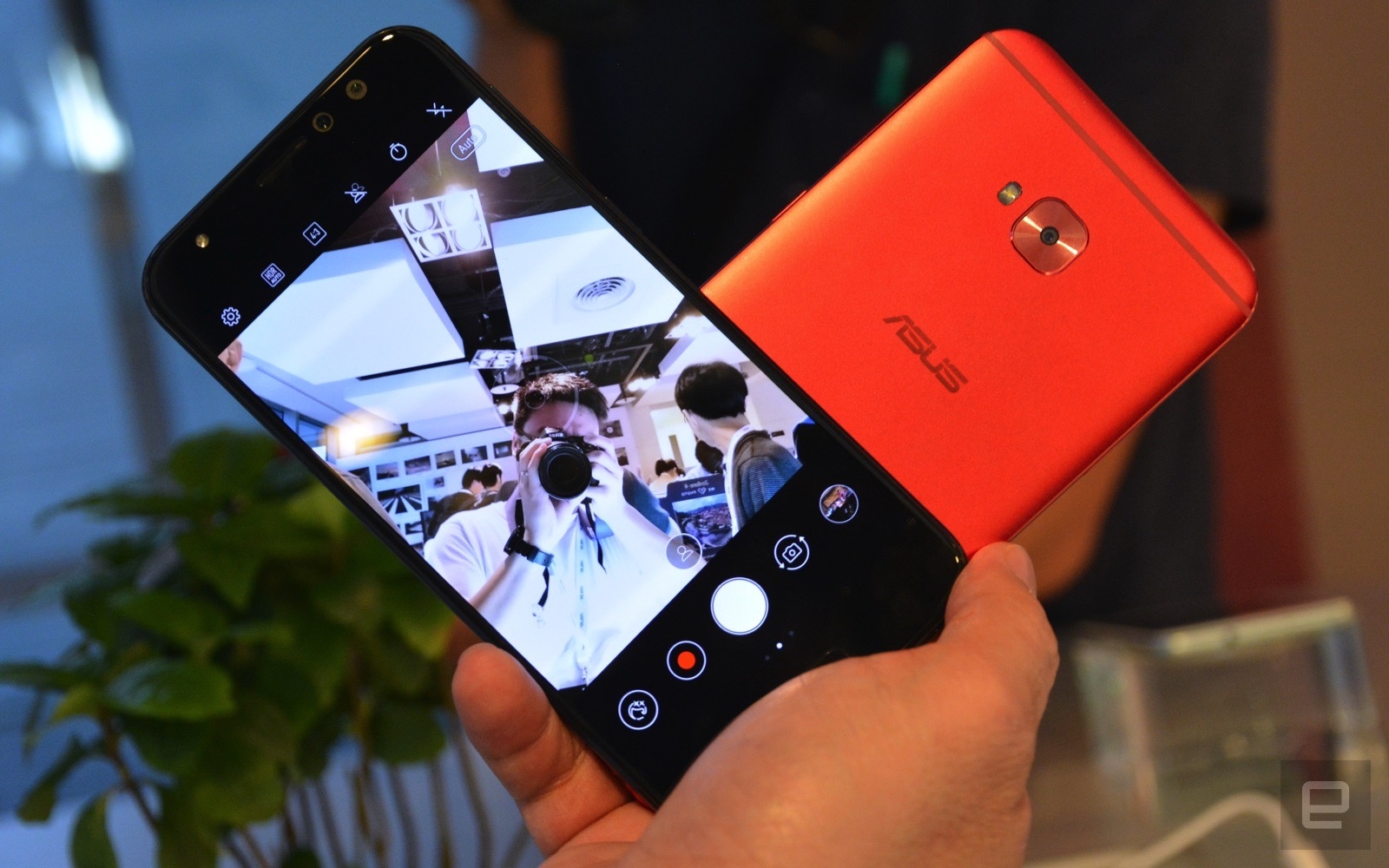
We’re not done yet. As you can tell by the name, the ZenFone 4 Selfie series is all about taking selfies and “wefies” (ASUS’ word, not ours), hence the use of a dual camera on the front here for toggling a super wide view. Out of the two models, you can easily spot the ZenFone 4 Selfie Pro (ZD552KL) by its slick aluminum unibody which comes in at just 6.85mm thick.
The dual camera’s main sensor packs the same flagship 12-megapixel, 1.4um Sony IMX362 sensor, though its dual-pixel AF has been cunningly rejigged to output 24-megapixel sefies, because apparently there are users who want to print their selfies. Furthermore, you’ll also be able to take 4K selfie videos. For the 120-degree super wide angle selfie capture, you’ll have to switch to the secondary sensor which, for some reason, comes with a disappointingly low 5-megapixel resolution (OmniVision 5670, 1.12um, f/2.2). The f/2.2 main camera here uses the 16-megapixel, 1um Sony IMX351 which we (keep up!) already saw in the ZenFone 4 Pro’s dual camera.
The ZenFone 4 Selfie Pro runs on an octa-core Snapdragon 625 chipset and packs up to 4GB of RAM plus 64GB of storage, along with microSD expansion via the second SIM slot. It also comes with a 3,000 mAh battery which is pretty good given its thickness. The only odd thing about this new phone is its micro-USB port, but ASUS reps reasoned that the main markets they are targeting with this series are still mainly using micro-USB, which would make sense. It’ll be available in red, gold and black, and prices here start at $379.
The lower-end ZenFone 4 Selfie (ZD553KL) features a metallic design akin to the ZenFone 3 Zoom (especially the two shiny metallic grooves on the back), so you wouldn’t assume it’s related to its Pro counterpart. It features the less powerful octa-core Snapdragon 430 chipset, a 720p 5.5-inch LCD (up to 400 nits), 4GB of RAM and 64GB of storage. Interestingly, despite it being a cheaper model, ZenFone 4 Selfie offers a dedicated microSD slot on the removable tray, meaning you won’t have to sacrifice one of the two SIM slots.
The dual camera on the front is a combination of a 69-degree camera and a super wide 120-degree camera: the former is a 20-megapixel f/2.0 imager (Omnivision 20880, 1 um), and the latter shoots 8 megapixels at f/2.4 (Omnivision 8856, 1.12um). The main camera does 16 megapixels at f/2.0 (Omnivision 16880, 1 um). Nothing too exciting here compared to the other models in the line, but then again, it’s priced at $279. It’ll be available in pink, green, gold and black.
ZenFone 4 Max Pro
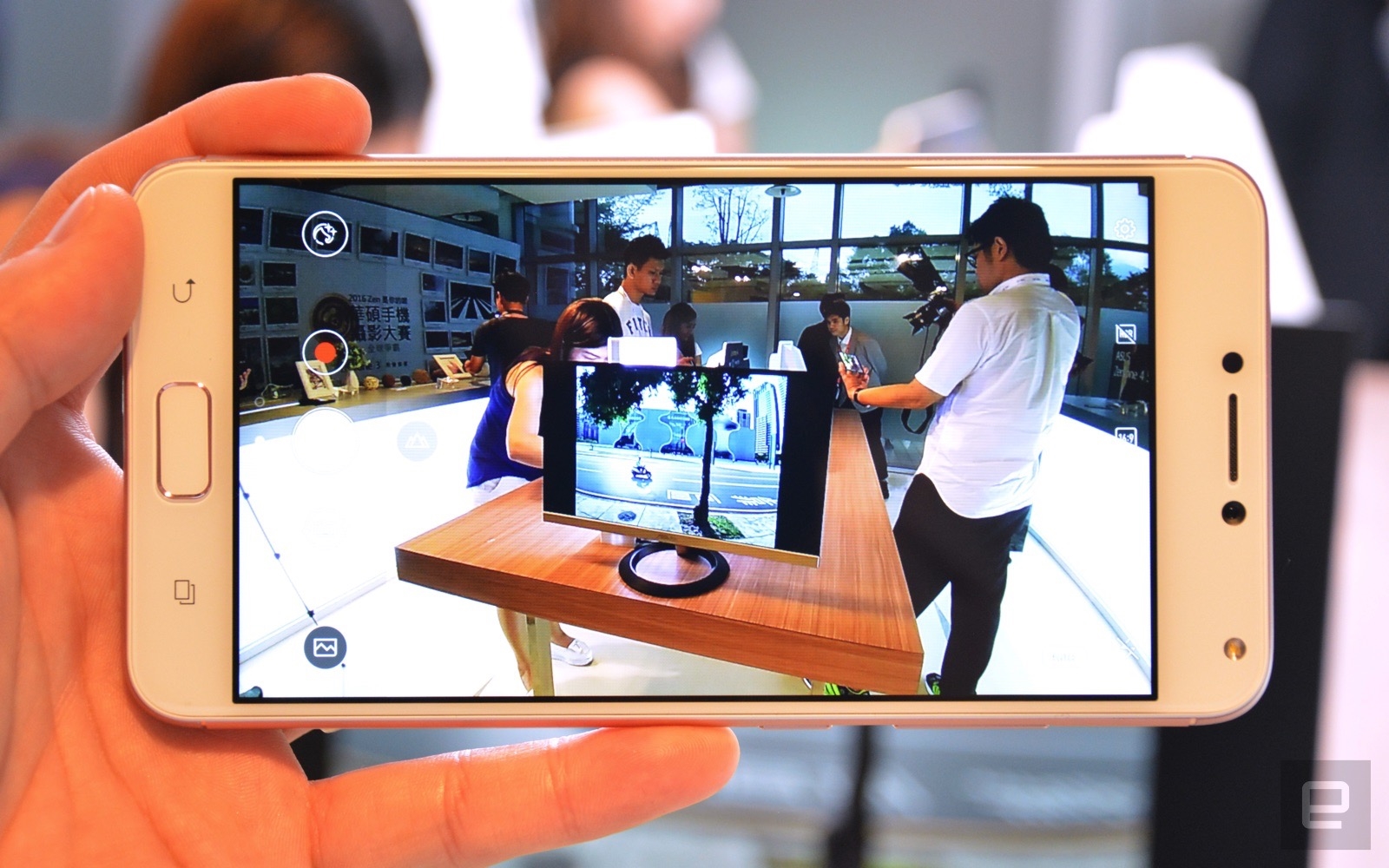
Last but not least, we have the ZenFone 4 Max Pro which is all about its massive 5,000 mAh battery, along with dual cameras on the back for super wide angle shots. From afar, it looks a lot like the ZenFone 3 Zoom on the back, but its 8.9 mm thick body hides its dense battery well.
There’s not much to say about its low-end quad-core Snapdragon 425 chipset (Snapdragon 430 for India) nor its 5.5-inch 720p display. It does, however, have a 16-megapixel sensor for both the selfie camera and the main imager on the rear dual camera (both with OmniVision 16880 sensor with 1.12 um pixels; f/2.0 aperture; 80-degree view). The 120-degree super wide angle imager on the dual camera uses just a 5-megapixel sensor (Omnivision 5675, 1.12um) with f/2.2 aperture, so again, don’t expect print-quality images coming out of this side of the dual camera.
Unlike the other models, there’s no word on the ZenFone 4 Max Pro’s price just yet.
Given how the recently launched ZenFone AR is a good example of an all-in-one smartphone, it may seem odd to see ASUS headed in a different direction with its mainstream devices. But then again, perhaps this makes more sense for a company that’s going for volume, because there’s bound to be one model that fits well in certain markets. And ultimately, ASUS will have to sell a ton of phones to make up for the presumably fat paycheck paid to its latest celebrity spokesperson, Gong Yoo.
ZenFone 4 Pro and ZenFone 4
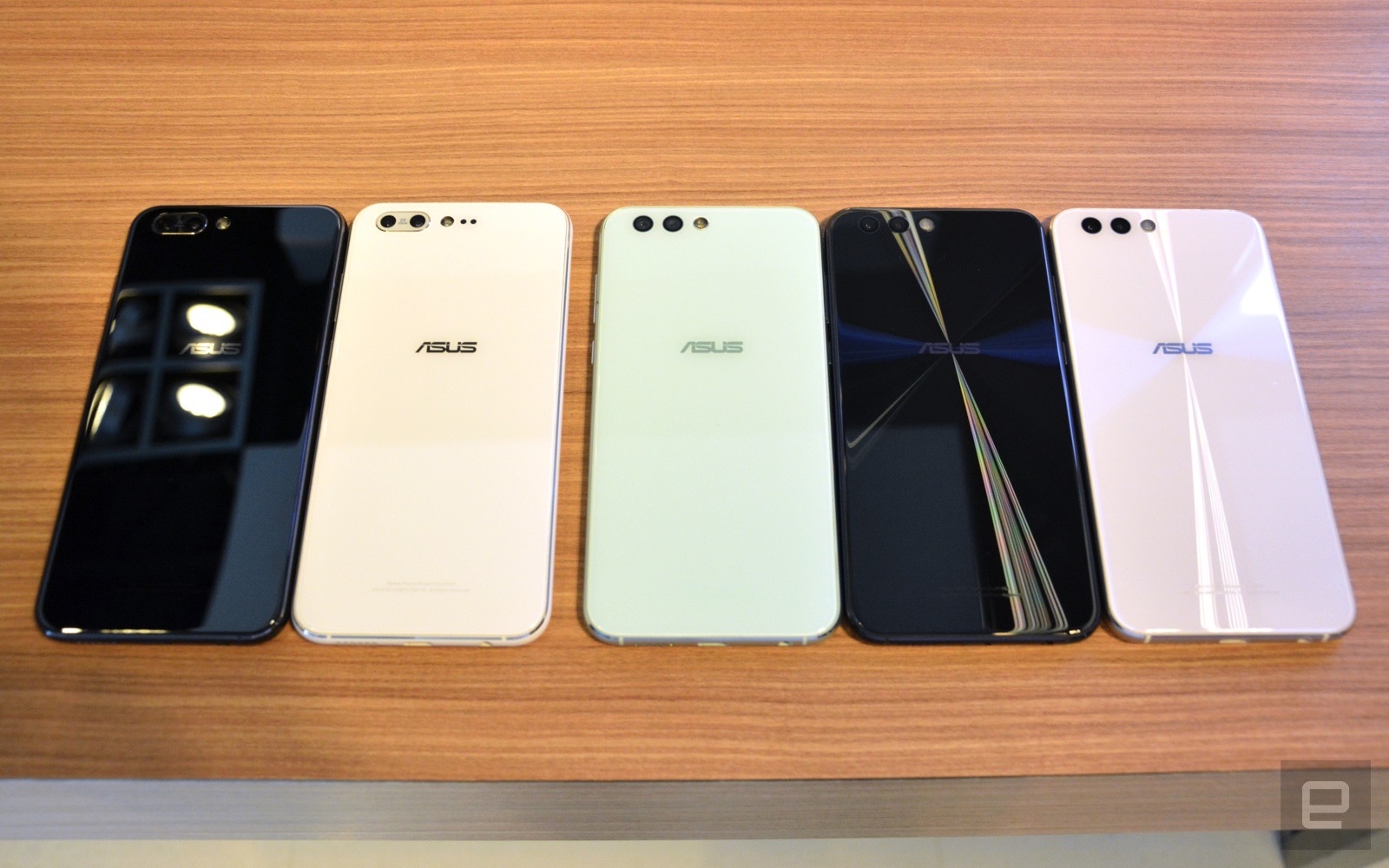
The ZenFone 4 Pro (ZS551KL) is essentially the direct descendant of the ZenFone 3 Zoom, featuring a 2x zoom dual camera, a Snapdragon 835 chipset and the same 500-nit, 5.5-inch 1080p AMOLED display. Unlike the old full-metal body, this time ASUS opted for a glass-metal-glass sandwich design, with both sides using 2.5D Gorilla Glass panels that are flush with the aluminum mid-frame’s rounded edges. The fingerprint reader has been relocated to the front for a cleaner look on the back; this is also consistent across the entire ZenFone 4 line as well as the recently-launched ZenFone AR.
The main sensor on the dual camera is the same 12-megapixel Sony IMX362 sensor seen on the ZenFone 3 Zoom, which is a good thing: it comes with large 1.4um pixels for better light sensitivity, and this is boosted with a fast f/1.7 aperture plus 4-axis image stabilization — optical stabilization for stills and electronic stabilization for videos. As before, the main sensor here takes advantage of ASUS’ “TriTech+” bundle for supposedly speedy and accurate autofocus. This consists of 2nd-gen laser AF for improved low-light performance, the usual dual-pixel phase detection AF plus continuous subject tracking AF.
Thanks to this bundle and ASUS’ SuperPixel Engine, advanced users can use this main sensor to go fully manual, use slow motion capture (up to 120 fps in 1080p), 32-second slow shutter mode, 4K time lapse mode (with dedicated power-saving feature) and even a super resolution mode (creating a 48-megapixel image by combining four 12-megapixel images into one).
The secondary sensor is a Sony IMX351 (the one on the HTC U11’s front camera), which is paired with an f/2.6 aperture for both 2x optical zoom and bokeh effect (aka “Portrait Mode”). While it has smaller 1um pixels, ASUS went with this sensor to take advantage of its higher resolution for further digital zoom — up to 10x in total, when needed. It’s worth noting that this sensor only uses the old-school contrast detection AF instead of “TriTech+,” so it’s probably best reserved for well-lit environments.
The front camera is pretty nice, too, featuring an 8-megapixel Sony IMX319 (again with large 1.4um pixels), f/1.9 aperture, an 88-degree wide angle view and phase detection AF. Naturally, you’ll find the usual beauty mode here (and also on the rear cameras, in fact) with various options for the skin, eyes and contour.
Other bits include 802.11ad WiGig connectivity (in single SIM mode), dual speakers, tri-mic noise cancellation and a generous 3,600mAh battery. Depending on your region, the ZenFone 4 Pro may come with up to 6GB of RAM and up to 128GB of internal storage (with microSD expansion using the second SIM slot), while prices start at $599.
(64)

